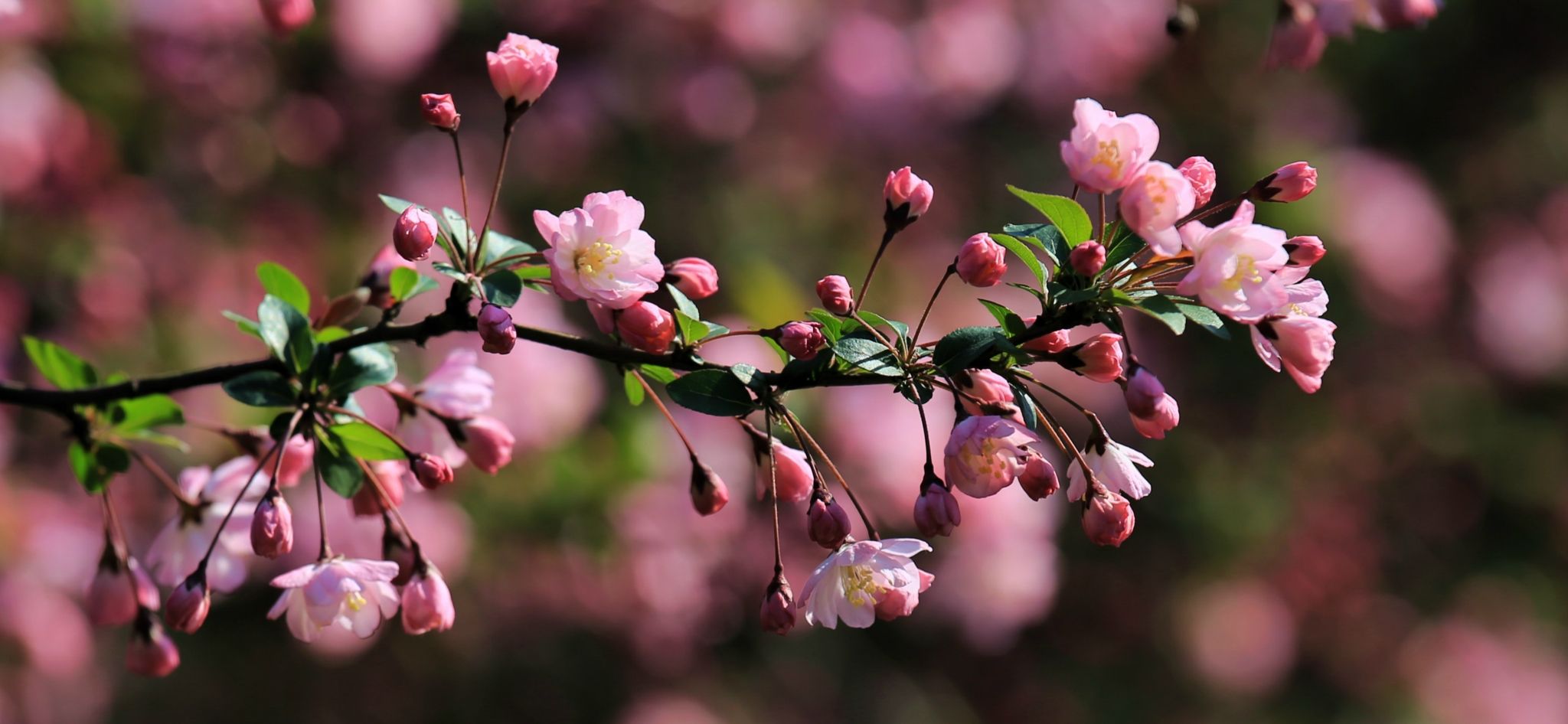Investigations of flower images in Chinese literary tradition

The celebrated poet Su Shi depicted the Chinese crabapple flowers in the lines:“fearing the crabapple flowers will fall asleep at night, I have to light a candle to keep them awake to see their beauty,” revealing the aesthetic preference for flower imagery.
Gardening and appreciation for flowers are traditions deeply rooted in Chinese history. Many artistic and literary creations themed on flowers have nurtured profound national traditions and a cultural legacy. These aesthetic creations are worthy of further study.
Flower image
Yang Haiming, a professor from Suzhou University, said ancient Chinese people emphasized the value of nature, advocating that “man is an integral part of nature.” There is a tradition to begin a poem with description of plants, presenting emotions by depicting scenery and metaphors in which humans are compared to objects. Rich images of flowers and fruits of different solar terms have been picked in the poems to effectively demonstrate themes. Yang argued that people are impressed by the beauty of flowers and embedded this beauty in numerous writings. For example, in the Book of Songs, there are two lines describing the blossoming of the peach flowers: “the peach tree is slender and sturdy, flaming red are its blossoms.” “Slender and sturdy” effectively presented the youth of the peach tree, which blossoms early and does not live for a long time. The two lines in the poem vividly show the biological characteristics of a peach tree by using concise language. There are many similar descriptions in ancient Chinese poems, such as “national beauty and heavenly fragrance,” “hidden fragrance and scarce shadow” and “bathing beauty,” to respectively refer to the peony, plum flowers and lotus.
Yang added that the famous poet Su Shi used personification to depict the Chinese crabapple flowers in the lines: “fearing the crabapple flowers will fall asleep at night, I have to light a candle to keep them awake to see their beauty.” Yang believed these verses came out of rich experience of flower appreciation, revealing a unique spirit in literary creations.
Database
Numerous Chinese classic literature works on flowers fall generally into two categories: ‘literature’ and ‘gardening.’ The literature genre mainly involves works of all kinds of themes and styles, such as poetic forms of writings in praise of flowers and various pieces of knowledge and anecdotes. The gardening genre mainly recorded cultivation techniques of agriculture, medicine and natural science, including all of kinds of flowers.
Zhong Zhenzhen, vice-president of the Song Dynasty Literature Society, said our predecessors have done a lot in the compilation of literature on flowers. There were specific books for flowers on special topics and also general collections. Contemporary scholars also wrote extensively on this, such as the publication of the Collection of Poems on Chinese Flowers and Appreciation Dictionary of Poems about Flowers. However, Zhong argued that the collection efforts are far from enough. In addition to praising certain specific flowers, there were writings describing flowers as a whole. Also, more attention should be laid on writings on flowers in different conditions, such as in the four seasons, day and night, sunny and rainy days, as well as in blossoming and withered states, Zhong said.
With the advent of an information society, collection and compilation of flower literature has become easier. Scholars suggested that an Internet database would be convenient for the general reader to look for information and reference, and for scholars to retrieve, analyze and research these works.
Multiple disciplines
At present, Chengjie, a professor from Nanjing Normal University, conducted special research and illustrations on the aesthetic history and spiritual symbolism of famous flowers and plants, as well as cultural phenomena of flowers. His work also focused on their spiritual significance in various spaces and times. He said that flowers are a resource of natural, social and cultural values. Related research requires wide participation of humanities and natural sciences. However, the present condition is characterized more by the absence of humanities and social sciences in gardening research, with scientific popularization, life guidance and cultural works lagging behind.
Cheng argued that most of the descriptions of flower images in ancient times were confined to writers, works and creation images, while the awareness of the theme of flower literature and culture even today still lags behind.
“We have been engaged in in-depth investigation of famous plants, including plum flowers, peonies, lotuses, chrysanthemums, peach flowers, apricot blossoms, pine trees and bamboo, from multiple perspectives based on the academic foundation of literary and historical disciplines: in order to have an insightful and comprehensive mastery of flower literature and culture, and fully present the rich historical phenomena, profound spiritual connotations and broad social significance of traditional Chinese flower literature and culture,” Cheng said.
Zhang Jie is a reporter at the Chinese Social Sciences Today.

 PRINT
PRINT CLOSE
CLOSE